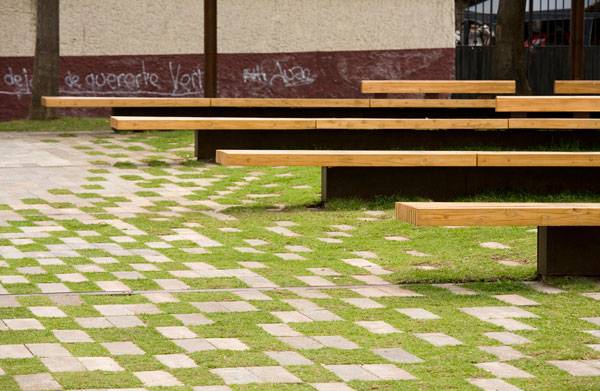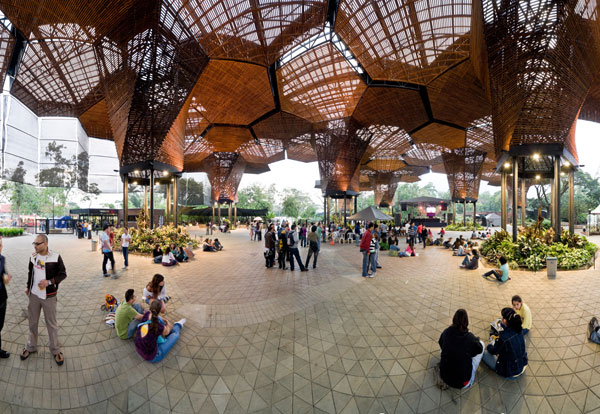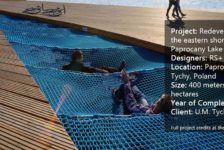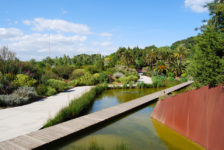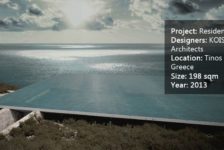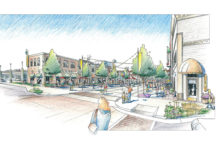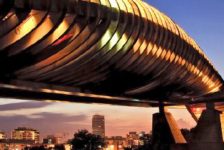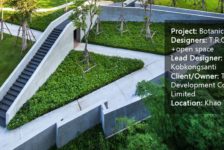Article by Sophie Thiel In our fifth article about landscape architecture tourist destinations, we take a closer look at landscape architecture in South America. In South America, there are only a few countries where landscape architecture as a profession is well established. Indeed, landscape architecture in the European sense is much less prevalent in South America. Brazil, which was influenced early by Roberto Burle Marx and Rosa Kliass, seems to be one of the rare exceptions. However, those cities or regions that have a more profound understanding of landscape and garden design are still hard to find throughout the continent. The following list includes ten different examples of such rather hard-to-find landscape architecture projects of South America. Although there are many other reasons to visit the various countries of this continent, visiting new and exotic landscape design sites is often what landscape architects need, to regain inspirational power.
Landscape Architecture in South America
10. Hotel Unique and its Garden– Sao Paulo, Brazil, by Gilberto Elkis As the name suggests, this postmodern hotel building by Brazil’s foremost architect Ruy Ohtake breaks with known standards. Its exceptional design reminds one of a dazzling ocean liner standing in the middle of a residential area. Landscape architect Gilberto Elkis designed the riveting surrounding garden as an equal accompaniment to the Hotel Unique. When viewed from different perspectives – whether from the ship-like portal of a suite, from the ground floor, or from the rooftop bar and pool deck – its landscape varies dramatically. From above, the winding water channel evokes an abstract drawing, but from the ground plane, where the coursing line is barely visible, the architectural cut of the vegetation dominates the view as the trees seem like outcrops of the crescent-shaped building. If you stay in Sao Paulo, the Hotel Unique with its commanding landscape is a must-see landmark.
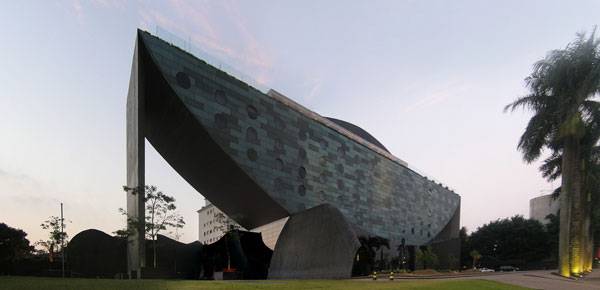
Image: Design by Ruy Ohtake; Hotel Unique, Sao Paulo, Brazil April 2006. Photo credit: seier+seier, via Flickr, licensed under CC-SA 2.0

The Hand sculpture at Punta Del Este, Uruguay. Photographed by user Coolcaesar on November 20, 2012. Photo credit: By Coolcaesar – Own work, CC BY-SA 3.0
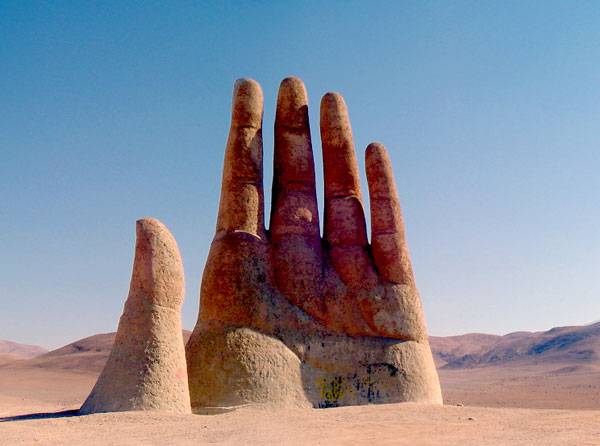
Image: Panorama around Mano del Desierto. Photo credit: By Marcos Escalier from Antofagasta, Chile. – Flickr, CC BY-SA 2.0

Image: Farmhouse and chapel gardens in Barra de Guaratiba where Burle Marx died in 1994. Photo credit: By Halley Pacheco de Oliveira – Own work, CC BY-SA 3.0
- Top 10 Most influential Landscape Architects of All Time
- 8 Amazing Facts About Burle Marx That You Didn’t Know
4. Orquideorama – Medellin, Colombia, by Plan B Architects + JPRCR Arquitectos With the Orquideorama , the city of Medellin gained a design attraction that inspires both residents and visitors alike. Orquideorama is a large timber and steel canopy located in the Botanical Gardens of Medellin. The 50-foot-high canopy not only creates a shading extension of the surrounding forest, but the trunk structures also form various functional spaces such as a café for visitors, a feeding facility for birds, and a butterfly breeding area. Be prepared to go on an educational trip, since the Botanical Garden of Medellin is home to more than 4500 species of plants and more than 1000 species of animals. Take this opportunity to see and learn about the natural environment found only in Colombia and South America; you won’t want to leave. The Botanical Garden of Medellin is ranked number 7 of 142 things to do in Medellin, on TripAdvisor.
If you’re loving this article, don’t forget to bookmark these for later:- 10 of The Best Tourist Spots for Landscape Architecture in Europe
- 10 of The Best Tourist Spots for Landscape Architecture in Asia
- 10 of the Best Tourist Spots for Landscape Architecture in Australia
3. Rua Gonçalo de Carvalho – Porto Alegre, Brazil Seen from above, the Gonçalo de Carvalho street in Porto Alegre looks like a soft but thick green carpet between the adjacent buildings. When entering the street on ground level, you will be overwhelmed with the feeling of diving into a different world. The reasons for this are the countless rosewood (Tipuana tipu) tree lines that tower over the 500-meter-long, ancient cobbled street on both sides. The trees were planted in the 1930s and have grown into a shady neighbourhood canopy that creates a pleasant climate to be found whenever you might take a walk at Rua Gonçalo de Carvalho. The street became famous worldwide in 2005 when a resident initiative fought to preserve the gorgeous redwoods. Take the time for a long stroll under the leafy canopy and get inspired to create your own Gonçalo de Carvalho in the future.
2. Quilotoa Crater Overlook – Zumbahua, Ecuador, by Jorge Javier Andrade Benítez, Javier Mera Luna, and Daniel Moreno Yet another exceptional tourist spot can be found in South America. The Quilotoa Crater Overlook is a viewing platform that enables visitors to step out over an active volcano at nearly 4000 meters above sea level. To reach this place, you could go on a hiking trip on your own, or you may decide to ride comfortably on a mule and be guided by true indigenous people of the Ecuadorian Sierra through the sensitive Andean Paramo ecosystem until you reach the overlooking platform and its breath-taking views. One thing is for sure: the Quilotoa Crater Overlook project, also called Mirador Shalala by the indigenous people, teaches everyone the lesson of how to meet human needs without compromising a perfect natural site.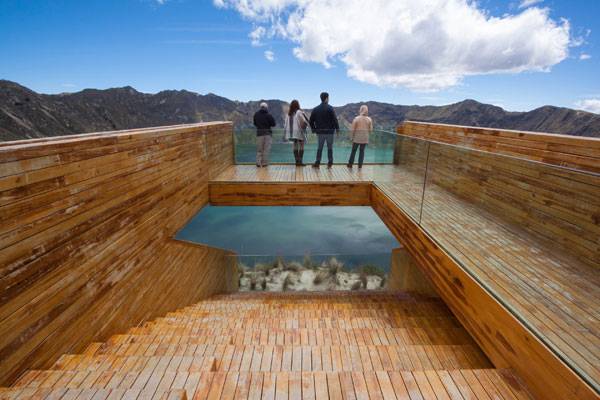
Quilotoa Crater Overlook, Zumbahua, Ecuador, by Jorge Javier Andrade Benítez, Javier Mera Luna, and Daniel Moreno
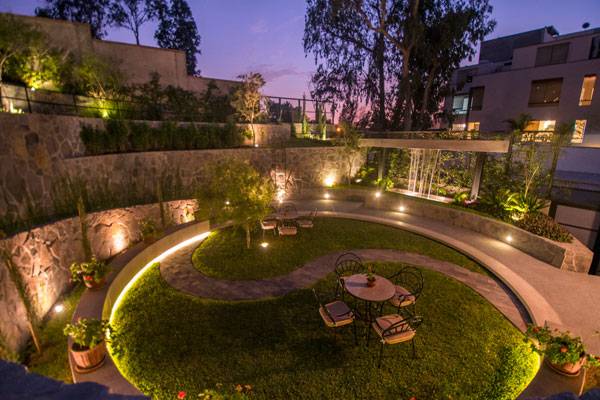
Cockfight Coliseum Garden. Images courtsy of 2.8 x arquitectos
Recommended Reading
- Natural Swimming Pools: Inspiration For Harmony With Nature by Michael Littlewood
- You Can Draw in 30 Days: The Fun, Easy Way to Learn to Draw in One Month or Less by Mark Kistler




